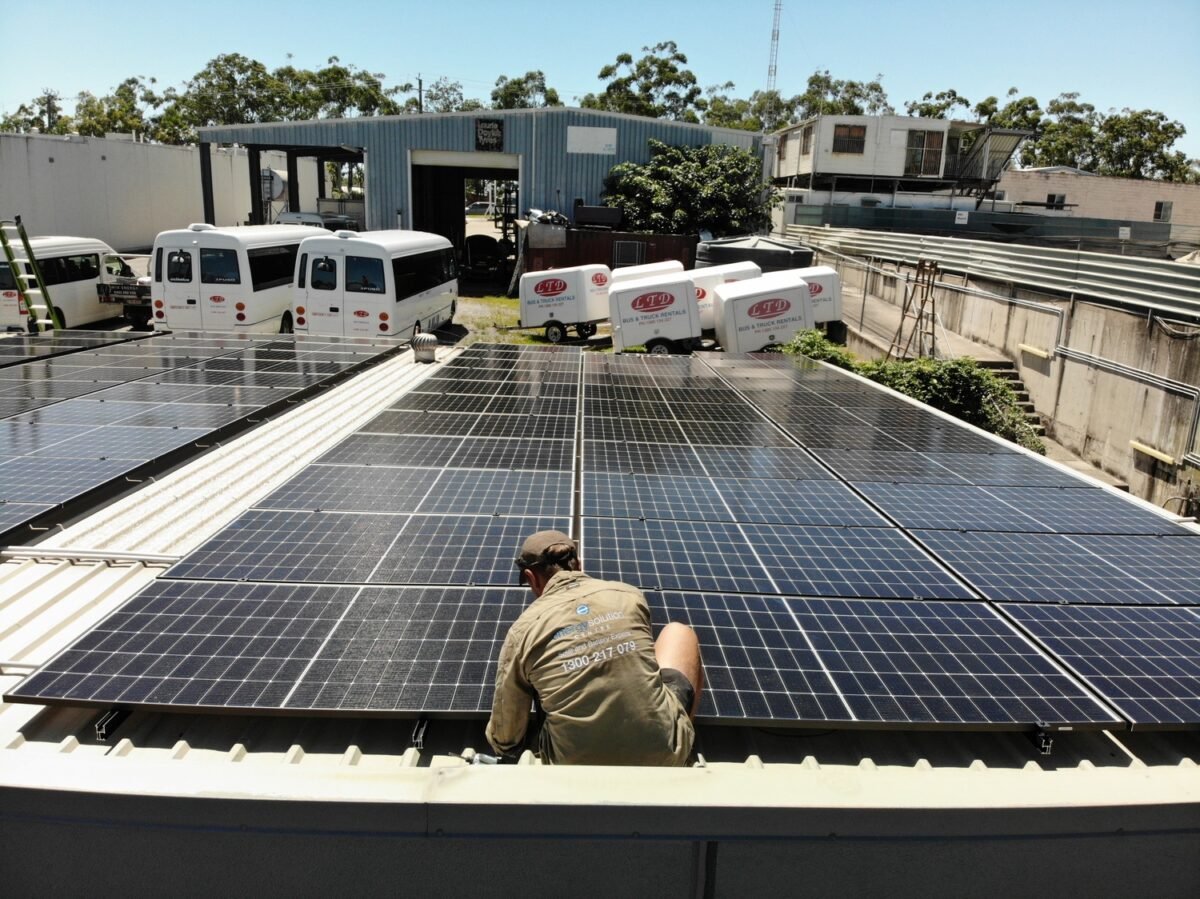Queensland businesses are at a turning point in how they manage energy. With electricity costs rising and sustainability becoming a non‑negotiable priority, commercial solar installations have moved into the spotlight. On the Gold Coast, where sunshine is abundant, companies of all sizes are rethinking how they use energy, not only to control expenses but also to demonstrate environmental leadership. What was once considered a niche investment is now a mainstream strategy. Solar is proving to be a business decision that balances financial gains with environmental responsibility.
In this expanded guide, we’ll explore why solar is reshaping business operations, the core benefits it brings, the technologies driving it forward, and what the future looks like for solar adoption across Queensland. We’ll also address common challenges, highlight case‑like scenarios, and provide deeper context for businesses considering the shift.
Why Businesses Are Turning to Commercial Solar Installations
Rising Energy Costs in Queensland
Electricity prices across Queensland have been consistently trending upward. For businesses operating on tight margins, these increases have a noticeable impact on profitability. Energy‑intensive sectors such as hospitality, retail, and manufacturing feel the pinch most strongly. By installing solar, businesses generate their own electricity during daylight hours, reducing their draw from the grid and insulating themselves from unpredictable price hikes. Over time, this stabilisation can be the difference between steady growth and financial strain.
Sustainability Commitments
Stakeholders—customers, employees, investors, and even regulators—are demanding greener practices. Adopting solar helps companies align with sustainability frameworks, corporate social responsibility goals, and environmental standards. Businesses that can demonstrate reduced carbon emissions gain reputational advantages. On the Gold Coast, where tourism and lifestyle industries dominate, showcasing eco‑credentials through solar adoption resonates with both locals and visitors.
Government Incentives and Rebates
Queensland and federal incentive schemes make solar more accessible than ever. Small‑scale Technology Certificates (STCs) and Large‑scale Generation Certificates (LGCs) are designed to reduce upfront capital outlay, effectively lowering the barrier to entry for many companies. The Australian Government’s Clean Energy Regulator regularly updates eligibility details, ensuring businesses can calculate the most efficient financial pathway into solar.
Benefits of Commercial Solar Installations for Modern Companies
1. Substantial Cost Savings
Solar power reduces operating expenses significantly. Every kilowatt‑hour generated on‑site is free after the system pays itself off. For example, a mid‑sized warehouse might save tens of thousands annually, freeing resources for reinvestment into staff, equipment, or expansion. These savings create a competitive edge, particularly in industries where cost control is critical.
2. Energy Independence
Solar reduces reliance on grid supply, giving companies greater control and predictability. Businesses with battery storage achieve even more independence, using stored energy during evenings or when demand peaks. This autonomy shields companies from both supply shortages and volatile pricing.
3. Enhanced Brand Reputation
Customers and clients increasingly choose to engage with businesses that reflect their values. Displaying visible solar panels or communicating energy savings in sustainability reports demonstrates leadership. Whether appealing to eco‑conscious tourists, green investors, or environmentally aware staff, solar boosts credibility.
4. Long-Term Return on Investment
While the upfront investment can appear daunting, solar systems typically achieve payback in three to seven years. After that, the power generated continues at little to no additional cost for decades. With warranties extending 20–25 years, businesses enjoy long‑term returns while contributing to a sustainable energy landscape.
5. Scalable Solutions
No two businesses are the same, and solar offers scalability. Small office rooftops can host modest systems, while large industrial facilities can scale installations to megawatt capacity. Adding solar battery storage improves flexibility, ensuring energy is available at night or during blackouts.
6. Environmental Leadership
In addition to cost and branding advantages, solar delivers measurable reductions in greenhouse gas emissions. Every kilowatt generated reduces the reliance on fossil fuel‑based generation, helping Queensland meet renewable energy targets and strengthening a company’s role as a sustainability leader.
Key Technologies Driving Commercial Solar Installations
Advanced Solar Panels
Modern panels deliver greater efficiency and durability. On the Gold Coast, high‑efficiency modules mean even businesses with smaller rooftops can harness significant amounts of solar energy. Innovations in design also ensure that panels withstand coastal weather conditions such as salt exposure and strong winds.
Solar Battery Storage
Battery systems such as Tesla Powerwall 3 and Enphase solutions give businesses a practical way to store surplus energy. For companies that operate late into the evening or maintain critical operations 24/7, storage ensures uninterrupted energy supply. Stored energy also provides insurance against outages, which can otherwise be costly for sectors like healthcare, hospitality, or logistics.
Smart Inverters
Inverter technology has advanced considerably. Enphase micro‑inverters, for example, allow each panel to operate independently. This not only increases efficiency but also enhances safety. If one panel is shaded, it does not compromise the performance of the others, reducing downtime and ensuring consistent output.
Digital Monitoring Tools
Many systems now come with software that provides real‑time tracking of energy generation and consumption. Business owners and facility managers can log in through apps or web portals to monitor performance, compare savings, and quickly identify potential issues.
The Process of Commercial Solar Installations
1. Consultation and Site Assessment
A thorough assessment sets the foundation for a successful project. Installers evaluate the property, energy usage patterns, and long‑term goals. For instance, a café in Surfers Paradise may have very different requirements compared to a logistics hub in Nerang.
2. System Design
Once data is collected, engineers design a system that balances efficiency, budget, and projected growth. This stage includes selecting panels, inverters, and batteries while considering shading, roof orientation, and available space.
3. Installation
Qualified technicians carry out the physical installation, adhering to safety standards and ensuring panels and equipment are placed for maximum output. For many businesses, installation can be completed with minimal disruption to daily operations.
4. Grid Connection
After installation, the system is connected to the local electricity grid. Excess energy is exported, allowing businesses to earn credits or offset costs further. This connection is particularly valuable for companies running operations outside peak solar hours.
5. Ongoing Monitoring
Post‑installation, companies gain access to monitoring tools that deliver live data on energy production, consumption, and performance. These tools empower businesses to adjust usage habits, maximise efficiency, and calculate ongoing savings.
6. Maintenance and Support
Though solar systems require little upkeep, routine checks ensure longevity. Reputable installers provide maintenance plans and warranties, giving businesses peace of mind for decades.
Challenges and Practical Solutions
- High Initial Costs: Financing solutions, leasing models, and government rebates help businesses overcome upfront expenses. Return on investment calculations often highlight affordability in the medium term.
- Space Restrictions: Advanced panels extract more power from limited roof areas, making solar viable for smaller buildings.
- Maintenance Needs: Regular inspections and professional servicing extend system life and ensure optimum performance.
- Knowledge Gaps: Many decision‑makers are unfamiliar with solar technologies. Partnering with experienced installers bridges this gap, providing tailored education and transparent advice.
- Industry‑Specific Concerns: For example, refrigerated warehouses or tourism operators have unique consumption profiles. Custom design ensures these businesses achieve the best results.
The Future of Commercial Solar in Queensland
The trajectory of solar adoption in Queensland is steep. Government targets aim for higher percentages of renewable energy in the national mix, and businesses are expected to play a significant role. Technological advances, such as AI‑driven energy optimisation and smart grids, are poised to make commercial solar even more efficient. The Gold Coast, with its vibrant economy and high solar exposure, is positioned to lead the way. As more businesses adopt, economies of scale drive costs lower, encouraging further uptake.
In the near future, we are likely to see integrated systems combining solar, batteries, electric vehicle charging, and smart building technologies. This convergence will make businesses not only energy self‑sufficient but also active contributors to a smarter, cleaner grid.
FAQs About Commercial Solar Installations
Q1: How much can a business save with commercial solar installations on the Gold Coast?
Savings depend on system size, energy use, and available roof space. Many businesses report reductions of 40–60% in their energy bills, with some achieving even higher savings by pairing solar with battery storage.
Q2: Will solar work if there’s a blackout?
Yes. When combined with battery storage, solar systems provide backup power. Businesses can keep essential systems like refrigeration, lighting, and IT infrastructure running even during outages.
Q3: How long does installation take?
Timeframes vary. A small office system may be completed within a week, while larger industrial projects could span several weeks to months depending on complexity and approvals.
Q4: What rebates are available in Queensland?
Schemes like STCs and LGCs remain central to cost reduction. Businesses should consult the Queensland Government site for the latest eligibility information. Local councils also occasionally provide additional incentives for renewable projects.
Q5: Is solar suitable for all industries?
Yes. Whether for retail, tourism, health, logistics, or heavy industry, systems can be customised to match energy demands. Even businesses with irregular consumption patterns benefit when systems are designed with flexibility in mind.
Q6: What about environmental reporting?
Companies increasingly need to disclose their environmental impact. Solar energy adoption provides measurable data that can be included in sustainability reports, satisfying investor and customer expectations.
Conclusion
For forward‑thinking Gold Coast businesses, commercial solar installations are far more than an energy upgrade—they are a comprehensive solution that blends economic prudence with environmental leadership. Solar lowers operating expenses, provides energy independence, enhances reputation, and supports government renewable goals. By acting today, businesses not only secure long‑term stability but also position themselves as leaders in a sustainable future.The momentum is clear: solar is not just about keeping the lights on. It’s about building resilience, unlocking savings, and contributing to a cleaner community. Companies that make the shift now will stand at the forefront of Queensland’s renewable transformation. To learn more or to explore tailored solar solutions, contact Energy Solution Centre today on 1300 217 079, visit the showroom at 19 Price St, Nerang QLD 4211, or browse online at energysolutioncentre.com.au.

